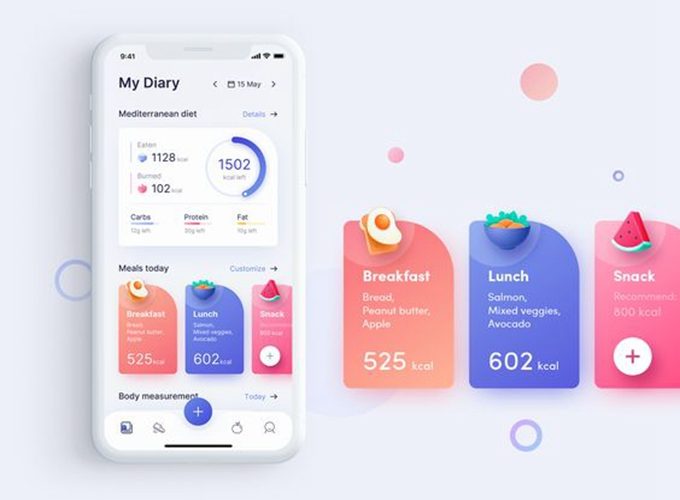Person retention has all the time been a key issue within the success of any app. In e-commerce, as an example, buying a brand new buyer is anyplace from 5 to 25 occasions costlier than retaining an present one. With iOS 14’s modifications to consumer acquisition knowledge, and upcoming modifications to electronic mail monitoring, retention has turn into much more essential — and aggressive. For manufacturers targeted on an omnichannel presence — app, net and electronic mail — privateness modifications could make offering a coherent buyer expertise more difficult.
Table of Content
Why is loyalty essential?
Information from Alter’s App Traits report discovered that retention for e-commerce apps is comparatively excessive in contrast with reference verticals — with a retention fee of 13% on day 7 and eight% on day 30. Nevertheless, once we contemplate that the worldwide median eCPI for an e-commerce app in This autumn 2020 was $1.56, with increased costs in additional developed e-commerce markets, you may see why getting a return on that funding is so essential. Even past e-commerce, loyalty is a key software to maintain clients, it doesn’t matter what vertical you’re in. Growing buyer retention by even 5% can enhance income by between 25-95%. To make sure you earn out that preliminary set up value, you could deal with loyalty.
However that’s the place customer-focused app builders begin to run into the challenges posed by iOS 14. With much less deterministic knowledge to judge channels, and fewer exact concentrating on to seek out customers which can be thinking about your providing, the preliminary prices to seek out good high quality, excessive conversion customers are rising. That is mixed with a decreased skill to supply related, customized advertisements.
Personalization is a robust software in fashionable commerce, with 91% of shoppers extra more likely to store with a model in the event that they present customized gives and proposals. However except you persuade your customers to opt-in, personalization turns into harder. Loyalty applications and incentives will be the best way to make sure you’re utilizing clients’ zero-party knowledge and avoiding privateness issues.
Zero get together knowledge
Forrester coined the time period zero-party knowledge and states that it’s “Information {that a} buyer deliberately and proactively shares with a model, which may embrace choice middle knowledge, buy intentions, private context, and the way the person desires the model to acknowledge her.”
By opting into loyalty applications, responding to surveys for incentives, or providing focused reductions for sure consumer behaviors, you may construct a financial institution of information that clients are enthusiastically opting-in to share. Since zero-party knowledge is sourced straight from the consumer, it’s reliable, and you’ll be sure {that a} buyer desires to listen to from you. Customers who’re giving zero-party knowledge additionally need it to turn into extra tailor-made, in order that they’re prepared that will help you present them with extra related alternatives to transform.
For electronic mail entrepreneurs, this may turn into significantly essential on iOS 15, as monitoring pixels will not be allowed on iOS. Some 60% of the typical electronic mail checklist is inactive or lifeless, and and not using a solution to test open charges, there’s no solution to weed out customers which have dropped off. By making a double opt-in within the preliminary sign-off, like an extra electronic mail affirmation hyperlink upon sign-up, you may make sure you’re getting customers which can be prepared to make at the least that first preliminary funding of consideration. And by providing a coupon or low cost you may enhance the speed that customers are prepared to opt-in.
Studying about your clients
Preserving customers in-app by loyalty techniques works throughout verticals — with non-gaming apps deploying gamification techniques and gaming apps deploying loyalty tiers and bonuses extra usually seen within the airline business. On line casino apps are significantly adept at utilizing loyalty techniques to extend retention.
Whereas the IDFA is essentially going away as a reliable omnichannel identifier, entrepreneurs will nonetheless have entry to the IDFV in addition to another first-party identifiers. The IDFV provides companies an identifier to entry first-party consumer knowledge and supplies a chance to know the audiences inside apps they personal.
Analytics instruments, CRM and Alter use tool-specific IDs to establish customers, sending occasions and attributing behaviors to these clients. Probably any occasion can set off a loyalty profit, and deciding which behaviors to incentivize must be a part of your loyalty technique.
Loyalty applications take pleasure in intuitively explaining to clients what they get out of sure actions. There’s a transparent end result, and sometimes a greenback quantity, that’s paired with taking an motion. Customers are prepared to create accounts to profit from loyalty schemes, they usually additionally clearly see the good thing about personalization within the loyalty setting.
With an ever-increasing deal with privateness, discovering methods to mix zero- and first-party knowledge to supply an enhanced buyer expertise is the best approach to make sure you’re offering the extent of personalization that in the present day’s shoppers are used to, with out risking their knowledge.

